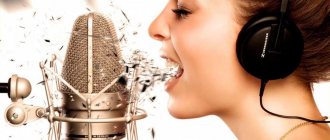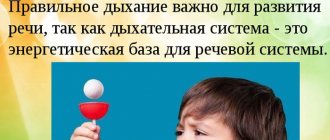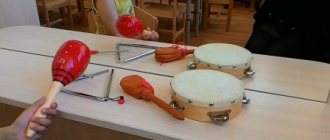A person’s voice is one of the main means of communicating with other people. That is why its loss creates a lot of inconvenience and problems. The vocal cords are responsible for the presence of a person’s voice - they are two elastic muscles that are located in the larynx and are attached to the cartilage of the larynx. For sound to appear, it is necessary that the cords close completely; unfortunately, there are many reasons that lead to problems with the voice and its complete absence.
WHAT IS DYSPHONIA?
Dysphonia is a disorder of voice function due to pathological changes in the vocal apparatus.
As a rule, it manifests itself in the form of disturbances in the strength, pitch and timbre of the voice, and hoarseness is characteristic. But the voice does not disappear completely, only partially.
This pathology manifests itself quite well, so problems during diagnosis simply disappear. Correcting dysphonia in a child is carried out using an integrated approach and is aimed at eliminating the cause.
Why does my voice become hoarse?
It is believed that if the voice is hoarse or hoarse, the culprit of this unpleasant condition is a cold. Or a hoarse throat was the result of a loud scream. But this is just the tip of the iceberg. There are other reasons why your throat may become hoarse:
- The reason why a hoarse throat may be infectious diseases of a viral or bacterial nature: sore throat, chronic tonsillitis, pharyngitis, laryngitis.
- A condition in which the vocal cords become hoarse is often associated with an allergic reaction. Contact with an allergen (plant pollen, house dust, pet hair, household chemical products, etc.) can cause severe swelling of the larynx and vocal cords. One of these dangerous manifestations of allergies is angioedema - when the first signs of edema appear, you must quickly seek medical help, since any delay poses a threat to life and health.
- Overload of the vocal cords is a common “illness” of representatives of speech professions, who, by the nature of their work, have to talk a lot. But even an ordinary person can overstrain his vocal cords if he talks or shouts loudly and for a long time.
- The throat may become hoarse if its mucous membrane is burned, for example, with acetic acid.
- A foreign object (for example, a small fish bone) can easily injure the walls of the larynx, as a result of which the throat can also become hoarse.
- Changes in speech sound occur in adolescent boys during puberty. This is a natural process, and there is no need to specifically try to quickly restore vocal functions.
- The throat may become hoarse under unfavorable external conditions: cold, dry, dusty, polluted air.
- Tobacco smoking is a common cause of vocal cord problems. Everyone remembers how heavy smokers speak.
- Hoarseness or complete aphonia may appear after surgery when the recurrent nerve, the recurrent nerve, is unintentionally damaged.
- Also, during a tracheotomy operation, when a tracheotomy tube is placed in the first rings of the trachea, the voice is also completely absent.
- Severe stress or fear can cause hoarseness. Complete rest and avoidance of nervous tension will help you recover.
- Hoarseness can be caused by cancer of the larynx, both benign and malignant. Hoarseness is the first signal to which you need to quickly respond and undergo diagnostic measures with an oncologist.
Hoarse throat is a symptom that can be eliminated by treating the underlying disease. And since there are many causes of dysphonia, and some of them are truly life-threatening, it is necessary to promptly contact an otolaryngologist for diagnosis.
REASONS FOR VIOLATION
In medical practice, causes are divided into two groups - congenital and acquired.
| Congenital causes of dysphonia (disorders in the larynx) |
|
| Acquired causes of dysphonia |
|
Phonopedic exercises - solving health-saving and coordination problems of working on the voice
Yulia Samsonova
Phonopedic exercises - solving health-saving and coordination problems of working on the voice
One of the forms of prevention of diseases of the throat and vocal apparatus is phonopedic exercises .
Developments by V. Emelyanova, M. Kartushina develop nasal, diaphragmatic, abdominal breathing, stimulate the laryngeal-pharyngeal apparatus and brain .
From the existing levels of vocal activity (pre-speech, speech and singing)
singing is based on signals of pre-speech communication, because
the vocal apparatus is a self-regulating system in which only the articulatory muscles can be controlled .
And all other components are influenced only through the creation of optimal conditions for the operation of the self-regulation mechanism. Vocal manifestations begin already in newborns. It has been proven that by the screaming and crying of a child, you can already determine what kind of voice it will be - high or low. The vocal apparatus develops through sound signals of pre-speech communication (squeaking, moaning, crying, humming)
.
By the age of five, the gradual development of the vocal folds . From the age of 9-10 voices become stronger and their range expands.
Adults should remember that children should be taught to sing not for matinees, concerts, or children's entertainment. The main goal is the development of the child’s personality, emotional sphere, and aesthetic feelings. All children want to sing. They often sing too loudly, shouting, thereby straining their fragile vocal cords . Teachers must competently regulate the singing process, taking care of the health of their students , using such health-saving technologies as phonopedic games and health-improving exercises for the throat .
Children have both falsetto and chest sounds. The chest sound is more natural for them, as it comes from the spoken one. They use it most often in singing. However, it is safer for preschoolers to sing in falsetto, since the sound is based on the non-closure of the vocal cords , while chest singing causes friction of the cords. Therefore, for children of younger groups, a register from A of the first octave to E of the second octave is suitable, for older children - from A of the small octave.
Researchers prove that the muscles of the vocal apparatus in preschoolers are not developed, but they exist and function. Therefore, it is necessary to start developing a singing voice not from the age of 7, but earlier. It is necessary to focus on the vocal education of children under 6 years of age, since at this age all the necessary physiological and psychological characteristics for learning to sing have already been formed: the readiness of the vocal apparatus , the necessary amount of memory, the development of perception, imagination, and speech functions.
About the phonopedic method of voice development V. V. Emelyanova (FMRG)
«Phonopedic method of voice development»
V.V. Emelyanov.
Emelyanov Viktor Vadimovich is the author of a phonopedic method of voice development (candidate of pedagogical sciences, associate professor, head of the department of music education at Tyumen State University). In the past, he was a phoniatrist. As a professional vocalist and actor, he had to see from his own experience how important it is to have a healthy and developed vocal apparatus to control it correctly . He developed a unique pedagogical technology for developing the voice , expanding its capabilities, and mastering various singing techniques.
Phonopedic method of voice development (FMDV)
is a multi-level training program
(pedagogical technology)
for establishing
coordination and effective training of the human vocal solve speech and singing problems with consistently high aesthetic quality. The method is called phonopedic due to its restorative, preventive and developmental orientation. (For reference: Phoniatrics is a branch of otorhinolaryngology devoted to the problems of diagnosis, treatment and prevention of diseases of the vocal apparatus , phonopedia is a branch of speech therapy dealing with the restoration and prevention of the voice using special pedagogical techniques). The system of views and methods of working on voice production was outlined by the author in the book “ Voice . Coordination and training ”, which is addressed to the widest range of readers. In the FMRG, every step, every sound is justified. The method allows you to improve your voice in relation to each individual case, individually for each student, taking into account his natural characteristics. The development of the muscles involved in sound production allows us to resolve problems even with injured voices and vocal apparatuses with various defects. Not a single sound in the singing of exercises arises just like that. This is always some special “non-singing”
and/or non-speech position or action
of the voice-forming system , which can have a coordinating and training significance for our voice . The phonopedic method of voice development is also aimed at improving the health of the vocal apparatus and prolonging its service.
It helps improve a person’s psycho-emotional background, development and harmonization of personality. An important feature of the method is the development in a vocalist of any age of the ability for self-analysis and self-control, monitoring progress in their own learning. The vocalist gains the ability to understand his own perceptions, that is, to listen and hear himself correctly. The author provides voice games for working .
Educational voice games involve the creation of play situations in which children easily restore natural manifestations of the vocal function : express emotions outside and independently of any aesthetics and traditions. In the game, children discover the capabilities of their voice and learn to control it , turning on the body's energy resources. It is known that singing loudly is easier than singing quietly. This is natural: any coordination is mastered from a coarser level to a more subtle one. In shooting, for example, you cannot immediately hit the top ten.
, first you need to learn to hit at least the board on which the target is located! It’s the same in singing: if a child can first scream and then squeak and at the same time realize that these are different mechanics, this is the path to intonation.
These features form the basis of the FMRG.
be noted that along with the developmental task of exercises V. V. Emelyanov's projects are primarily aimed at preserving children's voices . Voice games based on the phonopedic method V. V. Emelyanov prepare vocal apparatus for correct, intonationally expressive pronunciation and are useful for the development of stage speech and freedom of expression.
FMRG exercises The phonopedic method of voice development has, first of all, a technological focus. The purpose of phonopedic exercises is to solve coordination and training problems of working on the voice . These exercises are preparatory and auxiliary in relation to vocal work . Phonopedic exercises stimulate and train the muscles involved in voice formation . What do phonopedic exercises give when teaching vocals ? These are: •Expansion of the range;
•Significant increase in the strength of each child's voice ;
•Increasing sound saturation;
•Flightability;
•Improved vibrato;
•Great melodiousness of sound;
•Freedom;
•Liberation of the singing sound and the singing process in general.
Phonopedic exercises are also important in the prevention of colds of the upper respiratory tract and throat diseases. In the work of a kindergarten music director, this method of developing a child’s voice can be used both fragmentarily in organized educational musical activities, and completely when providing additional musical educational services - in working with a choir or individual work with preschool children. phonopedic complex consists of 6 groups of exercises :
• articulation gymnastics;
• coordinating intonation phonetic exercises ;
• activating exercises based on voice signals of pre-speech communication (GSDC)
;
• training programs for chest (not falsetto)
register of children's and women's
voices ; (from 9 years old)
• training programs for the transition from the chest register to the falsetto register using the register threshold - “P”
;
(from 9 years old)
• training programs for the falsetto register of children's and women's voices . Each group of exercises has its own special meaning, but all these groups are interconnected. Mastering a program for voice development using the phonopedic method V. Emelyanova (FMRG)
involves several successive levels of training: Level 1. Preschoolers and primary schoolchildren who have not been trained in preschool institutions.
SYMPTOMS
With a disorder such as dysphonia, several symptomatic processes can be distinguished:
- Severe pain in the throat, even when swallowing liquid food and drinks.
- Increased body temperature.
- The voice is hoarse and low, and may drop to a whisper.
- Breathing is confused and noisy.
- The child is accompanied by a painful cough and dry mouth.
- Often the neck and back of the head areas hurt, this is explained by spasms due to constant tension of the vocal cords.
- The child is irritated and his mood often changes.
- The child’s general condition worsens: headaches, weakness, drowsiness.
In my practice, there were children whose speech was accompanied by ringing and loud sounds (stridor), and this arose due to a narrowing of the larynx and the absence of a lumen.
Ways to restore your voice
As mentioned above, special breathing exercises are prescribed to restore a lost voice. Today, there are various complexes that help restore the voice and improve its sound.
The following exercises are useful for people with partially lost voice:
- First, you need to squat down, and the distance between your knees should be no more than the size of 1-2 fists. At the same time, your back should remain straight, your hands should be placed on your knees. While in this position, you need to exhale, straining your arms, throat and neck as much as possible. After 6-10 seconds, you can relax, take a few regular breaths and exhale and repeat the deep exhalation.
Similar exercises should be done 6-10 times, they can be repeated after a couple of hours.
- First you need to lie on your back and take breaths in such a way that your stomach participates in them, then you will need to hold your breath and exhale slowly, while pronouncing the sound “C”, this exercise is done for about 5 minutes. After this, as you exhale, you should pronounce the sounds “Z” and “SH”.
- The next stage of this set of exercises is to pronounce the sound “M” while exhaling, while the body position remains the same as during the previous exercise.
- After this, try to hum the letter "M", making each sound the longest. The duration of this exercise is at least 5 minutes.
- Then you should draw out the sound “N” with your mouth open, while making sure that the pronounced letters sound without rattling.
Other ligament repair techniques
To restore the ligaments, you first need to relieve tension and relax them. For this purpose, a special exercise is used, called the “Yawning Lion”. During this procedure, you need to throw your head back and open your mouth wide, after which you need to try to make a sound similar to a loud yawn, while its tone should change. Yawning, according to experts, is the best way to relax the larynx, where the vocal cords are located.
Another effective way to relax the ligaments is to relieve tension in the diaphragm, which is the reason why many people have voice problems. In this case, special breathing exercises are used, among which Strelnikova’s system occupies a special place. This technique is used in leading clinics and centers in our country to treat other diseases of the respiratory system.
CLASSIFICATION
There are several forms of dysphonia, depending on the characteristics.
| Mutational | This form is characteristic of male teenagers; the voice begins to “break.” The Adam's apple enlarges, the amount of mucus increases and swelling appears. |
| Spastic | There are no vibrations in the vocal cords. This happens due to impulsive contractions of the internal muscles of the larynx. This is why it is so difficult for a child to speak. |
| Psychogenic | There is no sonority in the voice, but the baby is able to speak in a whisper. Often this form is transformed into aphonia. |
| Functional | Violations of vocal functions, characterized by incomplete closure of the vocal cords. But at the same time, pathological changes in the larynx area are excluded. |
In order to correct dysphonia in a child faster, it is necessary to determine the form of the disease.
Treatment methods
The main factor in determining treatment options for voice loss is determining the cause of the condition. Very often, treatment consists of eliminating the symptoms of the underlying disease, which led to damage to the vocal cords and loss of voice.
Today, special sets of exercises are used to develop the vocal cords. They were mainly developed by phoniatrists (the so-called specialists who specialize in voice restoration), and therefore are quite effective. However, it is often possible to achieve complete voice restoration only through complex treatment prescribed by a doctor.
The main thing that patients who have lost their voice should pay attention to is maintaining silence.
In no case should you tear your ligaments and speak forcefully; this can lead to aphonia, after which it will be very difficult to restore your voice in full. In addition, you should avoid eating hot, spicy, salty and cold foods. You will also need to forget about alcoholic beverages and sour fruits, for example, citrus fruits should be completely excluded from the patient’s diet.
DIAGNOSTICS
When diagnosing dysphonia, it is necessary to consult such specialists as a pediatrician, endocrinologist, pediatric surgeon, otolaryngologist, and speech therapist.
First of all, the following is carried out:
- Physical examination of the child and collection of anamnesis (a set of data obtained by interviewing the subject). A visual examination of the larynx is performed, through which it is possible to assess the condition of the mucous membranes of the larynx and the functionality of the vocal folds.
- Acoustic voice research. The frequency and amplitude of the voice while reading is measured.
- Laboratory diagnostics. Collection of general tests: blood, urine, biochemical blood test.
- Examination by an otolaryngologist. An examination is performed for velopharyngeal insufficiency and assessment of airflow through the airways.
- Speech therapy examination of a child with dysphonia. The speech therapist evaluates the medical history; clarifies what complaints there are; studies the nature of voice formation and vocal attack; examines physiological and phonation breathing; checks tempo-rhythmic and intonation parameters of speech.
How does the human vocal apparatus work?
The larynx is not only part of the respiratory tract, it is an organ of sound production. It contains the vocal cords, a paired organ that is a collection of muscles. When a person is silent, there is a distance between the ligaments - the laryngeal cleft. For sound to be produced, the ligaments must be pressed tightly against each other. With such a tight closure, the air flow leaving the lungs as you exhale passes through the closed ligaments, causing them to vibrate. At this moment, sound arises and we hear human speech.
If the voice becomes hoarse and hoarse, it means that the ligaments cannot fit tightly together, as a result of which the sonority of speech is lost.
A condition in which the vocal cords become hoarse can be caused by their inflammation or a number of other reasons, which we will discuss further.
Like a drowning man holding on to a straw
My voice said nothing except the thorn. A friend recommended contacting laryngologist Professor Vasilenko from the hospital named after. Botkin, and he showed me several exercises from a complex of breathing exercises! And I clung to them like a drowning man clutching at a straw.
Arriving home, I immediately began to master them with great enthusiasm... I did these exercises in the morning and evening and during the day several times, although he recommended morning and evening to me...
The next day, my thin, chicken-like voice emerged, a day later it became somewhat articulate, and a week later my voice was completely restored. I remember this all my life!
- For me it was such an unexpected joy, bordering only on a miracle. Since then, this has been my morning exercise - 3-4 days a week. And starting this summer I do it every day.
Breathing gymnastics archery exercises
The main one was enough to restore my voice! Here he is
!
1. Palms
Initial position:
- Stand up straight, show your palms to the viewer, lower your elbows, psychic pose, take a short, noisy, active breath through your nose and at the same time clench your palms into fists (grasping movement), with all fingers clenching simultaneously and with force. It is very important.
Immediately after an active inhalation, the exhalation leaves freely and easily through the nose or mouth.
- You need to learn not to think about exhaling. Only inhalation is active, exhalation is passive.
It must be borne in mind that these simple exercises are done at the rhythm of a walking platoon of soldiers.
2. Shoulder straps
Press your hands clenched into fists to your belt. At the moment of a short noisy inhalation through your nose, push your fists towards the floor; during the push, your fists unclench, your fingers spread wide.
3. Pump
The movement is similar to when we pump up a tire with a car pump... Inhale at the bottom point of the inclination, exhale at the top..
4. Cat
Movement of the torso to the right and left with a simultaneous slight squat. Turn around, crouch down at the same time - inhale, i.e. inhale at the bottom of the squat. The arms are bent at the elbows and pressed to the body. Don't forget about tempo and rhythm.
5. Hug your shoulders
During a short noisy inhalation through the nose, we throw our hands towards each other, as if hugging ourselves by the shoulders. Inhale at the moment when your hands are on your shoulders. Keep your hands parallel to each other.
6. Bend forward. tilt back
Inhale from the floor, inhale from the ceiling. A very effective exercise. Bend, inhale, bend slightly at the lower back, head to the ceiling, inhale.
7. Head turns
The head turns without stopping to the right - inhale, to the left - inhale. You can keep your hands on your waist.
8.Ears
We look straight ahead. The head reaches to the shoulder to the right - inhale, to the left - inhale.
9.Pendulum
From a straight position, the head nods down and immediately up. inhale from the floor, inhale from the ceiling.
10.Rifles
Right leg in front, left one step behind. Sit down slightly on the right leg, inhale, transfer the weight of the body to the left leg, squat, inhale. We continue the second cycle of the exercise by changing the front and back legs.
11.Forward step
The exercise is as simple as that. Steps in place, raising your knees high. Raise the leg, inhale, raise the second leg, inhale. When you raise your knee high, you feel the diaphragm, and this strengthens its muscles, which is very useful.
12.Back step
We raise our legs one by one, as if trying to reach the buttocks. Raise your leg, inhale, the other, inhale. And so 96 times!!!
Expert commentary
Review of the book by Mikhail Shchetinin “Breathing gymnastics by A.N. Strelnikova”, chief specialist in functional diagnostics in Moscow, pulmonologist, doctor of medical sciences, professor of the Moscow Medical Academy. Sechenova M.I. Anokhina:
.
Thousands of patients have confirmed the high effectiveness of Strelnikova’s gymnastics.
M.I. Anokhin
A positive factor inherent in the system is movement. The necessity and usefulness of movement are undeniable.
M.I. Anokhin
Movement is good for everyone. In Strelnikov gymnastics it is cyclic, repeating, which is most adequate for vegetative-vascular dystonia. A specific element of gymnastics is changing the breathing pattern.
M.I. Anokhin
As you can see, the exercises are simple and accessible to everyone! Depending on the state of health, the load can be varied. After breathing exercises, morning exercises go with a bang!
Breathing exercise method
As I later found out, this is gymnastics by A.N. Strelnikova, who discovered this method of treating a wide variety of diseases!
This method is based on three basic rules:
First:
- Just think about inhaling! Train only inhale! But not artificial, long, voluminous, but natural - short and active!
Second:
- Do not close your mouth tightly. so that after each inhalation, the exhalation can go freely.
Third
- Count only your breaths
- It’s not difficult to remember the method of effective exercises!
The Strelnikov hundred consists of 96 breaths and movements.
This is the norm, after completing this norm - the next exercise. If it is difficult to complete 96 at once, you can start with 4, 8, 16. 32, but you need to get it to 96. I do all 96 at once in one exercise. There is a basic complex and additional exercises for various diseases.







